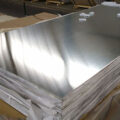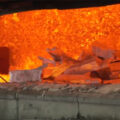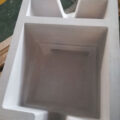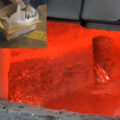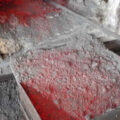The difficulty in producing remelting aluminum ingots lies in ripple control. The continuous casting machine adopts chain transmission, which has poor transmission stability and poor impact resistance. During operation, due to vibration and shaking, the molten aluminum in the mold that is not fully solidified will produce ripples. Therefore, the common surface ripple of aluminum slag is caused by the vibration of molten aluminum caused by slag discharge and the vibration of the casting machine.

For ripples caused by slagging, it is necessary to add a slag scavenger to the molten aluminum in the mixing furnace to stir the slagging. Strictly follow this process to completely separate the slag and aluminum in the molten aluminum and remove the slag to reduce the impact on subsequent slag removal.
Try to choose a shorter casting line for production to reduce the contact area between molten aluminum and air, thereby reducing the alumina formed by surface oxidation. Try to avoid the turbulence of molten aluminum, optimize the structure of the boat-shaped ladle, and place a slag stopper at the mouth of the ladle to prevent a large amount of oxidized slag from entering the mold. Production practice has proved that the higher the casting temperature, the more aluminum slag, and the larger the ripples produced during the slagging process. Control reasonable casting temperature, the less aluminum slag, the smaller the ripple caused by slagging.
The ripples caused by the vibration of the casting machine can reduce the unevenness of the running speed of the mold. Optimize the chain transmission device to reduce the influence of the chain transmission device on the aluminum ingot casting process, timely lubricate the bearing and mold chain, clean the residual aluminum on the chain and crawler, keep the crawler clean, and ensure the operation of the smooth casting machine, thereby reducing ripples The production.
Strictly control the quality of aluminum ingot molds to avoid installing sand holes and unclearly marked molds on the equipment. Check the mold regularly, and replace the mold in time when there are cracks or unclear marks on the mold. During the production process, auxiliary materials such as talc and titanium dioxide may remain in the cavity of the mold, which will hinder the fluidity of the molten aluminum, and the cavity of the mold should be cleaned regularly.
There are many production steps for remelting aluminum ingots, and each step will affect the quality of aluminum ingots. It is necessary to strengthen process management and control for different positions, earnestly summarize production experience, continuously improve the process, and continuously improve product quality.

